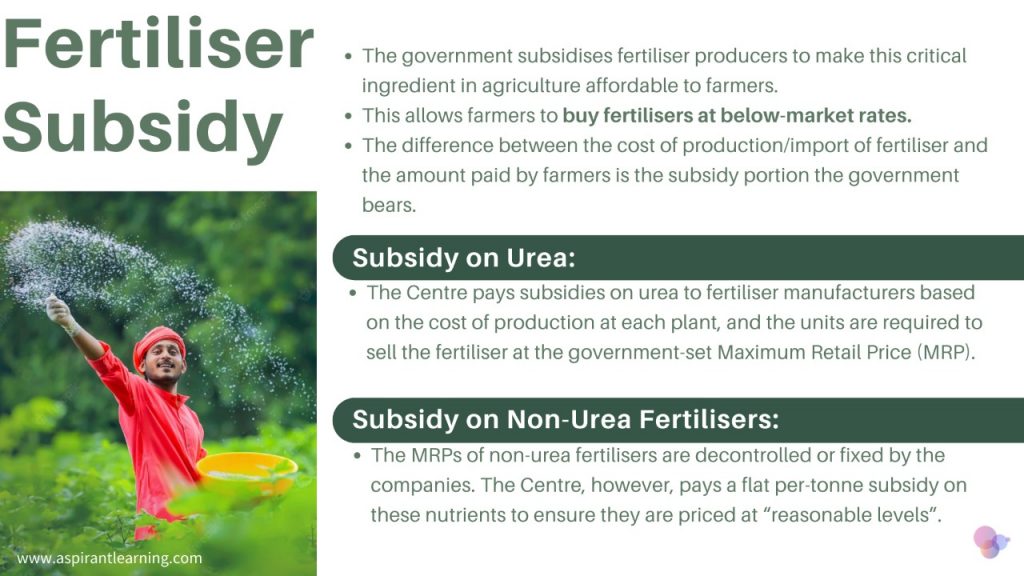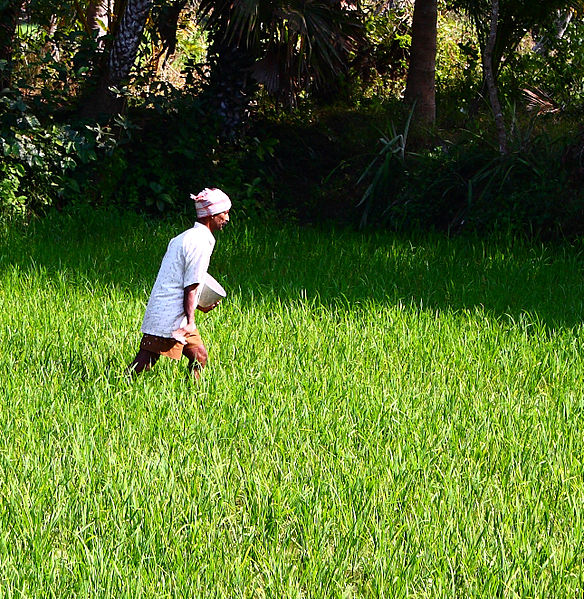News Highlight
The asymmetry in the pricing structure has led to a worsening nutrient imbalance due to the over-application of urea and DAP.
Key Takeaway
- 2022 saw global prices of fertilisers go through the roof in the run-up to and post Russia’s invasion of Ukraine on February 24.
- Landed per-tonne prices have, similarly, come off their peaks for di-ammonium phosphate or DAP and its intermediates/raw materials: Phosphoric acid, ammonia, sulphur and rock phosphate.
- Only prices of muriatic potash (MOP) have stayed at $590 per tonne since the war’s start, doubling from $280 till November 2021.
- This isn’t surprising, given that Russia and its neighbouring ally Belarus together account for roughly 40% of global production and exports of MOP.
Reasons behind this imbalance
- Underpricing of other fertilisers
- The government has fixed the maximum retail prices of Urea & DAP.
- Landed per-tonne prices have, similarly, come off their peaks for di-ammonium phosphate or DAP and its intermediates/raw materials: Phosphoric acid, ammonia, sulphur and rock phosphate.
- Only prices of muriatic potash (MOP) have stayed at $590 per tonne since the war’s start, doubling from $280 till November 2021.
- This isn’t surprising, given that Russia and its neighbouring ally Belarus together account for roughly 40% of global production and exports of MOP.
- Reasons behind this imbalance
- Underpricing of other fertilisers
- The government has fixed the maximum retail prices of Urea & DAP.
- In addition, it has informally fixed MRPs for NPKS complexes and muriate of potash (MOP).
- In comparison to urea and DAP, alternative fertiliser costs are generally higher.
- Farmers, therefore, lack the motivation to purchase additional fertilisers.
- Most farmers wouldn’t be concerned about DAP’s lack of K, S, or other macro- and micronutrients.
- Furthermore, their selection of fertilisers is mainly influenced by pricing.
- Supply-side constraints
- India is experiencing a shortage of fertilisers, particularly those containing phosphatic and potassic minerals.
- The challenges include logistics, sourcing supplies from new sources, and more expensive raw materials.
- The pandemic has influenced global fertiliser production, import, and transportation.
- Subsidisation and political motives
- Firstly, the underpricing of urea and DAP results from market distortions brought on by subsidies.
- The low prices and massive sales of these two fertilisers result from substantial government subsidies.
- Undoubtedly, electoral politics’ demands have taken precedence over worries about nutrient imbalances in the soil.
The effects of overconsumption of urea and DAP
- Crop yields would be harmed by the current NPK ratio of 13:5:1, which is out of the optimal range of 4:2:1.
- As a result of the lack of a balanced nutrient mix, it will have a negative impact on both plant and human health.
Government initiatives to rationalise the fertiliser use
- The Soil Health Card Scheme
- The soil health card informs farmers on the nutrient state of their soil and offers advice on the right amount of nutrients to apply to boost soil health and fertility.
- All farmers should receive soil health cards every two years to discuss nutrient inadequacies in fertilisation operations.
- Neem Coated Urea (NCU)
- It is a fertiliser, and the Indian government supports an agricultural programme to encourage the growth of paddy and wheat.
- Farmers have noticed that using urea coated with neem in wheat crops has reduced the prevalence of white ants.
- This is a result of the insecticidal qualities and aroma of Neem oil, which upon disintegration, was released in the standing water.
- ‘One Nation, One Fertilizer’ scheme
- Under the scheme, all fertiliser companies, State Trading Entities (STEs) and Fertiliser Marketing Entities (FMEs) will be required to use a single “Bharat” brand for fertilisers and logo under the PMBJP.

Way Forward
- The government could implement a flat per-hectare cash payment, perhaps twice a year, to replace subsidies on specific fertiliser products.
- Before the Kharif and rabi planting seasons, this money can be deposited into any farmer’s e-wallet account.
- The e-wallet may be used only for the purchase of fertilisers.
- The government can maintain a stock of essential fertilisers, including urea and DAP, to ensure no untoward price rise even in a decontrol scenario.
Pic Courtesy: The Hindu
Content Source: Indian Express



